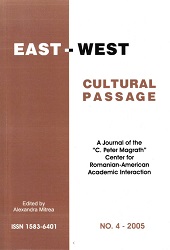Cultural Dissonances and the Monsterisation of the
Ethnico-Religious Other in the Late Medieval and Early
Modern Western Imaginary
Cultural Dissonances and the Monsterisation of the
Ethnico-Religious Other in the Late Medieval and Early
Modern Western Imaginary
Author(s): Estella CiobanuSubject(s): Christian Theology and Religion, Theology and Religion, Drama
Published by: Editura Universitatii LUCIAN BLAGA din Sibiu
Keywords: religious other; monsterisation; cannibalism; Middle English drama; Chronica majora (Matthew Paris); early modern cartography and cosmography; Sebastian Münster; Diego Gutiérrez;
Summary/Abstract: Often dubbed “Saracen” in the medieval Christian West and typically reviled and abjected as idolatrous and prone to abominations, the religious and ethnic other of Middle English drama and of Matthew Paris’s Chronica majora will endure, in different guises, in early modern imagological cartographies, if oftentimes displaced into the New World. In the process of self constitution, otherness becomes a projection of everything unacceptable to the self. Accordingly, Herod, the typical tyrant of Middle English biblical plays, is portrayed as a self-aggrandising sadistic butcher, whose bloodthirsty propensity as shown in the NTown and Towneley plays, however, is not substantially different from that of the cannibals populating early modern maps and cosmographies such as Sebastian Münster’s and Diego Gutiérrez’s. Nonetheless, the dramatic, historiographic and cartographic practices of the later Middle Ages and early modernity in England and on the Continent suggest that the dissonant other is but “another of the [hegemonic] same” (Irigaray) whose monsterisation works all the more effectively as it conceals its consonance with the supremacist self that has repudiated it. This paper seeks, therefore, to unravel the disavowed consonances, within late medieval and early modern discursive practices, between the other figure and the hegemony responsible for such othering.
Journal: East-West Cultural Passage
- Issue Year: 14/2014
- Issue No: 2
- Page Range: 29-52
- Page Count: 24
- Language: English
- Content File-PDF

